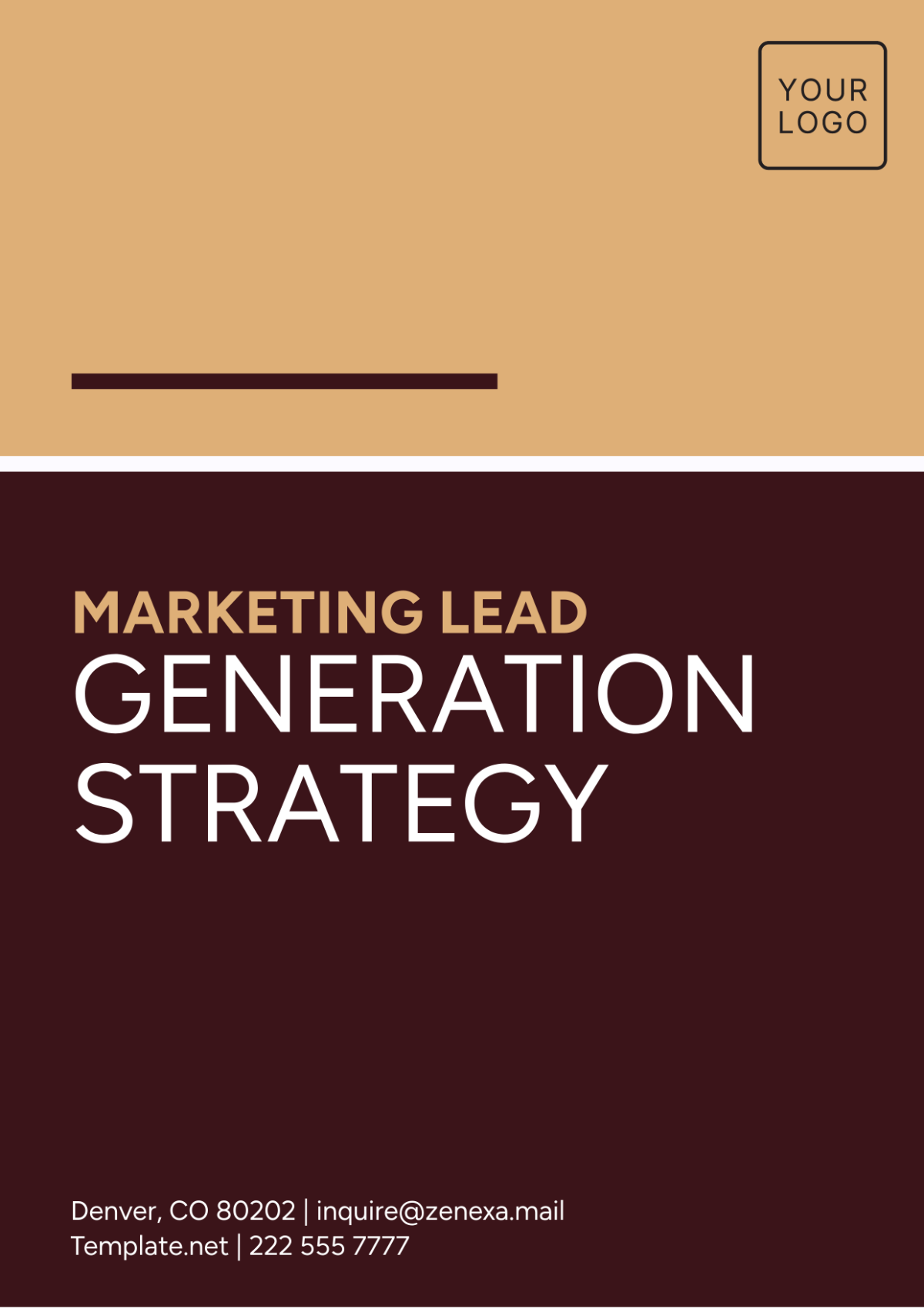Advertising Campaign Protocol Guide
Introduction
In today's dynamic and ever-evolving market, advertising campaigns stand as a cornerstone of success for brands aiming to leave a lasting impact on their target audience. This protocol guide, developed by [Your Company Name], provides a strategic framework for crafting, executing, and evaluating effective advertising campaigns. It distills our extensive expertise into actionable insights, ensuring that your campaigns not only resonate with your audience but also align with industry trends and outperform competitors. From the initial conception of creative ideas to the meticulous analysis of campaign performance, this document serves as an essential roadmap for achieving advertising excellence and driving sustainable growth.
I. Understanding Advertising Campaigns
An advertising campaign represents a strategic effort by a business to promote its products or services across different media channels. These campaigns are not just a collection of ads but a cohesive series designed to achieve a specific set of objectives. Understanding the intricacies of advertising campaigns is paramount for businesses aiming to maximize their market impact and achieve substantial return on investment (ROI).
The Specifics: Purpose and Goal
Setting clear, measurable goals is the foundation of any successful advertising campaign. Whether the aim is to increase brand awareness, drive sales, or launch a new product, defining these goals early on guides the direction and evaluation of the campaign's success. It's crucial for [Your Company Name] to establish specific, achievable objectives that align with its overarching business goals.
Target Audience Definition
Identifying and understanding the target audience is critical. This involves analyzing demographic, psychographic, and behavioral data to create a detailed profile of the ideal customer. By understanding the audience's preferences, behaviors, and media consumption habits, [Your Company Name] can tailor its advertising messages to resonate deeply and elicit a strong response.
Aligning with Industry Trends
Staying abreast of industry trends allows a business to position its advertising efforts at the forefront of innovation. This could involve leveraging the latest digital marketing technologies, adopting new advertising platforms, or incorporating trending themes into campaign messages. Aligning with industry trends ensures that [Your Company Name]'s campaigns remain relevant and compelling to its target audience.
Competitor Analysis
A thorough analysis of competitors' advertising strategies provides valuable insights into what works within the industry and what doesn't. It highlights opportunities for differentiation and innovation, allowing [Your Company Name] to craft campaigns that stand out in a crowded marketplace. This analysis should consider the competitors' choice of media, messaging tone, visual aesthetics, and promotional tactics.
Budget Allocation
Efficient budget allocation is essential for maximizing the impact of an advertising campaign. This involves not only setting a total budget but also deciding how to distribute it across different media channels and campaign activities to achieve the best possible ROI. [Your Company Name] must consider the cost-effectiveness of each channel, the campaign's scale, and the expected outcomes when allocating the budget.
II. Developing the Creative Concept
At the heart of every memorable advertising campaign is a creative concept that captures the audience's imagination. This concept is the big idea that unifies the campaign's various elements into a cohesive and impactful narrative. Developing a strong creative concept requires a blend of creativity, strategic thinking, and consumer insights.
Brainstorming Session
The journey to a groundbreaking creative concept begins with a brainstorming session. This collaborative process involves the team generating a wide range of ideas without judgment. Encouraging creativity and diversity of thought, [Your Company Name] can unearth innovative concepts that resonate with its target audience and reflect its brand values.
Conceptual Sketches and Mock-ups
Once potential concepts are identified, the next step is to visualize them through sketches and mock-ups. This stage helps in translating abstract ideas into tangible visuals that can be evaluated and refined. It provides a preliminary look at how the campaign could unfold across various media, allowing for early adjustments based on visual appeal and message clarity.
Selection and Finalization
Selecting the final concept requires careful consideration of its potential impact, relevance to the target audience, and alignment with the campaign's goals. This decision is made through a collaborative process, combining analytical data with creative intuition. Once selected, the concept is finalized and becomes the guiding principle for all campaign elements.
Content Creation
With the core concept in place, the focus shifts to creating compelling content that brings the idea to life. This includes crafting engaging copy, designing striking visuals, and producing any other creative assets required for the campaign. Content creation is a meticulous process, ensuring every piece aligns with the campaign's theme and effectively communicates its message.
Pilot Testing and Feedback
Before a full-scale launch, pilot testing the campaign with a smaller segment of the target audience provides invaluable feedback. This step allows [Your Company Name] to gauge the campaign's effectiveness, identify areas for improvement, and make necessary adjustments. Feedback from this phase is crucial for refining the campaign and optimizing its impact upon the official launch.
In combining a deep understanding of advertising campaigns with a robust creative development process, [Your Company Name] is positioned to create advertising initiatives that not only capture attention but also drive meaningful results.
III. Selecting the Right Media Channels
Choosing the appropriate media channels is an essential step in successfully reaching your target audience. The following table provides an insightful comparison of various media channels.
Media Channel | Description | Budget Considerations | Audience Reach |
|---|---|---|---|
TV | Visual and audio aspects allow for engaging storytelling | Can be expensive | Wide and diverse audience |
Radio | Narrow but targeted audience reach | Relatively low-cost | Targeted audience |
Great for local audiences | Moderate to high, depending on publication | Targeted, often local audience | |
Digital | Highly adaptable and customizable | Varies; can be more cost-effective | Potentially global reach |
Social Media | Encourages audience engagement and interactivity | Depends on platform and ad types | Targeted and segmented audience |
IV. Monitoring and Evaluating the Advertising Campaign
The phase following the launch of an advertising campaign is critical for measuring its effectiveness and making data-driven decisions. Monitoring and evaluating the campaign based on predefined key performance indicators (KPIs) ensures that [Your Company Name] can understand the impact of its advertising efforts and optimize future campaigns for better results.
Tracking Engagement Rates
Engagement rates serve as a primary metric for gauging how the audience interacts with the campaign. This includes actions such as clicks, likes, shares, comments, and view time. High engagement rates typically indicate that the content is resonating with the audience, capturing their interest and encouraging interaction. [Your Company Name] must regularly monitor these rates to identify trends and areas for improvement.
Assessing Campaign ROI
The return on investment (ROI) is a crucial metric for evaluating the financial efficiency of the campaign. It measures the net profit or loss generated by the campaign relative to its cost. Calculating the ROI involves analyzing campaign expenditures against the revenue generated from the campaign's objectives, such as increased sales or leads. [Your Company Name] uses this analysis to determine the campaign's economic value and justify future advertising investments.
Analyzing Audience Feedback
Audience feedback, gathered through surveys, social media interactions, and other channels, offers direct insights into the campaign's reception. It provides valuable information about what aspects of the campaign the audience found appealing or lacking. Analyzing this feedback enables [Your Company Name] to understand audience preferences and expectations, guiding adjustments in messaging, creative elements, or media channels.
Adjusting Strategy as Needed
Based on the ongoing analysis, [Your Company Name] must be ready to make strategic adjustments to the campaign. This could involve refining the messaging, reallocating the budget to more effective channels, or tweaking the creative elements to enhance engagement. The ability to pivot and adapt strategies in response to real-time data is essential for optimizing campaign performance.
Post-Campaign Analysis and Report
After the campaign concludes, conducting a comprehensive post-campaign analysis is vital. This involves compiling and reviewing all performance data to assess the campaign's overall success against its initial objectives. The findings are documented in a detailed report, highlighting successes, challenges, and lessons learned. This report serves as a foundation for informed decision-making in future campaigns.
V. Refinement and Preparation for the Next Campaign
The end of one campaign marks the beginning of the next phase in [Your Company Name]'s advertising strategy. This phase focuses on leveraging the insights gained from the previous campaign to refine strategies and improve future campaigns. A systematic approach to this process ensures continuous growth and the enhancement of advertising effectiveness.
Identifying Successes and Failures
The first step is to clearly identify what aspects of the campaign were successful and which were not. This involves a critical assessment of the campaign's objectives, KPIs, and overall impact. Understanding both successes and failures allows [Your Company Name] to replicate effective strategies and avoid past mistakes.
Performing a Comprehensive Analysis
A thorough analysis of the campaign extends beyond surface-level metrics to examine deeper insights into audience behavior, engagement patterns, and conversion paths. This comprehensive analysis might include segmenting data by demographics, behavior, or channel to uncover more nuanced insights. The goal is to develop a holistic understanding of the campaign's performance and its influence on the target audience.
Implementing Learnings into Future Campaigns
The knowledge gained from the analysis is then translated into actionable strategies for future campaigns. This could involve refining target audience profiles, adjusting content strategies, or exploring new media channels. By implementing these learnings, [Your Company Name] ensures that each campaign builds on the successes of its predecessors, leading to continuous improvement and innovation.
Planning for the Next Campaign
Armed with insights and refined strategies, the planning process for the next campaign begins. This phase involves setting new objectives, developing creative concepts, and selecting media channels, all informed by the learnings from previous campaigns. The planning process is both forward-looking and reflective, aiming to set the next campaign up for greater success.
Realigning with the Brand Identity
Throughout this process, it's imperative to ensure that the campaign and its strategies remain aligned with [Your Company Name]'s brand identity. This alignment guarantees that all advertising efforts consistently communicate the brand's values, personality, and promise to the audience. Maintaining this consistency is key to building brand equity and fostering long-term customer relationships.
By systematically monitoring, evaluating, and refining advertising campaigns, [Your Company Name] not only enhances the effectiveness of each campaign but also contributes to the sustained growth and success of the brand in the competitive marketplace.
Conclusion
The journey through planning, executing, and refining an advertising campaign is a testament to the dynamic nature of marketing in today's digital age. This guide has laid out a comprehensive framework designed to navigate [Your Company Name] through the complexities of advertising campaigns—from understanding and developing the initial concept to monitoring, evaluating, and refining the campaign based on performance insights. Remember, the key to a successful campaign lies not just in the creativity and execution but equally in the meticulous analysis and application of learnings for future endeavors.
As we strive to push the boundaries of what's possible with advertising, let this document serve as a blueprint for innovation, efficiency, and effectiveness. [Your Company Name]'s commitment to leveraging these strategies will ensure our brand not only reaches its target audience but also resonates with them, driving engagement and fostering growth. Let us move forward with the knowledge that each campaign is an opportunity to learn, improve, and excel in our advertising efforts, contributing significantly to the overall success of our brand.

















































